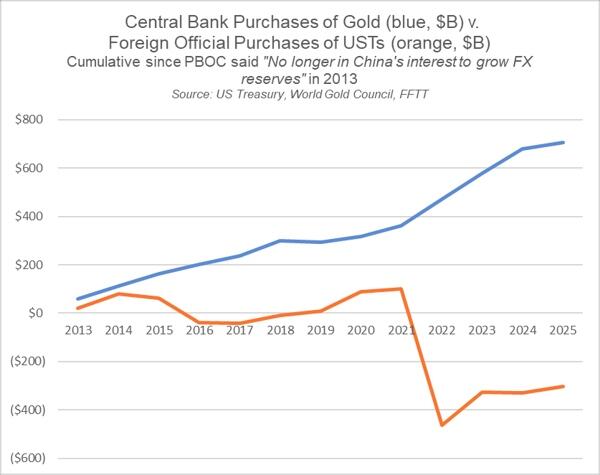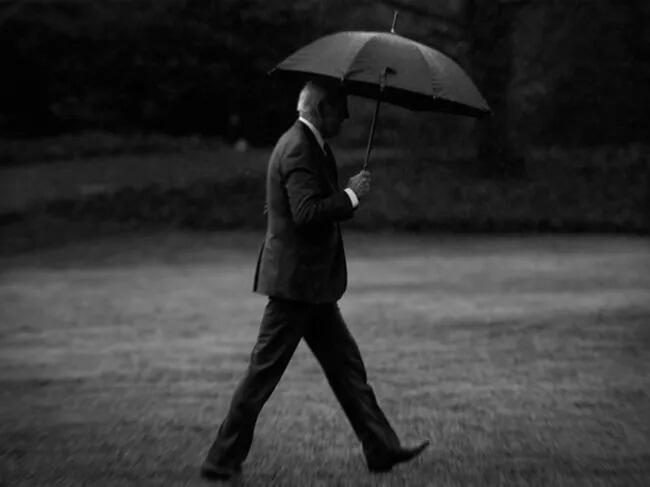Authored by Thomas Farnan via One-Legged Parrot,
Propaganda used to control Western democracies is running headlong into searchable facts freely available on the internet. As a result, the powerful cannot maintain their self-sustaining narratives and are behaving erratically and defensively, like bees when their nest is disturbed.

Opposition leaders in France, Romania, and Brazil have been barred from elections.
They were accused of spreading “disinformation” and then prosecuted for
unrelated crimes. In the United States, the same lawfare was attempted
against President Trump, but he won anyway.
Sun Tzu’s first principle of war is “know the enemy,” but
knowledge is difficult in an information war. Propaganda plants lies in
every soul. In 1928, the father of modern public relations, Edward Bernay (who also happened to be the nephew of Sigmund Freud), wrote in his book Propaganda:
The
conscious and intelligent manipulation of the organized habits and
opinions of the masses is an important element in democratic society.
Those who manipulate this unseen mechanism of society constitute an
invisible government which is the true ruling power of our country.
...We are governed, our minds are molded, our tastes formed, our ideas
suggested, largely by men we have never heard of. This is a logical
result of the way in which our democratic society is organized. Vast
numbers of human beings must cooperate in this manner if they are to
live together as a smoothly functioning society. ...In almost every act
of our daily lives, whether in the sphere of politics or business, in
our social conduct or our ethical thinking, we are dominated by the
relatively small number of persons...who understand the mental processes
and social patterns of the masses. It is they who pull the wires which
control the public mind.
Propaganda works by contrasting two sides.
Empathy for an opponent’s position is systematically removed by control
of information. Public policy filtered through propaganda is always a
binary choice.
In wartime, “us versus them” in a “kill or be
killed” conflict provides the necessary binary, and propaganda writes
itself. Domestic propaganda in peacetime is a bit trickier but works the
same way: by staking out two sides.
Mass media permits distinct
information sources. Elections award one side or the other with
temporary political rule, but power is never actually surrendered. Each
side simply acts as a fulcrum for the other side to pivot. Wedge issues inject urgency, but they are designed to produce a stalemate.
The
resulting political system resembles a seesaw: there is an appearance
of movement but only within the limited up-and-down physical arc of the
acceptable narrative. Both sides push in the opposite direction to
create controlled opposition, always in service of the status quo.
The way to defeat a propaganda regime is to find the first knot and to begin the slow process of untangling the mess.
In
World War II, the U.S. government partnered with Hollywood to craft
propaganda in support of the war. Elmer Davis, the head of the Office of
War Information, described the program:
“The easiest way to inject a propaganda idea into most people's minds
is to let it go through the medium of an entertainment picture when they
do not realize they're being propagandized.”
American wartime propaganda relied on a narrative gimmick called the hero’s journey. Moviegoers
were treated to human transformation as entertainment. The backwoods
huckster who fought the wisecracking city boy in basic training joined
with him to face down evil on the battlefield and became heroes.
In 1949’s The Hero with a Thousand Faces, Joseph Campbell summarized this storytelling method:
A
hero ventures forth from the world of common day into a region of
supernatural wonder: fabulous forces are there encountered and a
decisive victory is won: the hero comes back from this mysterious
adventure with the power to bestow boons on his fellow man.
Cinema
gathered people in dark rooms to have flickering images and later sound
beamed through their prone sensory systems, telling stories that became
part of the collective experience. Nazis, Communists, Democracies – all political systems – made use of film. Vladimir Lenin is quoted as saying, “Of all the arts the most important for us is the cinema.”
By manipulating its citizens
through the medium of entertainment, the United States did not need
gulags to imprison dissenters. Support for the war was self-enforcing.
It became, in a word, fashion.
The
problem with fashion – at least as a tool of policy – is that it
changes. The ostensible reason for the war was to rescue Poland from
tyranny. At the end of hostilities, though, the Soviet Union controlled
Poland, Eastern Europe, and half of Germany.
Winston Churchill was voted out of office shortly after VE-Day amid public brooding about the wisdom of the bloodshed. British foreign secretary Ernest Bevin captured the public mood
that led to Churchill’s ouster: “The Conservative Party carries a
terrible load of responsibility for the muddle which led to the war.”
In the United States, an antiwar movie – The Best Years of Our Lives – won seven Academy Awards in 1946. The film included the following soliloquy, spoken to an injured soldier:
We
let ourselves get sold down the river. We were pushed into the war….
the Germans had nothing against us. They just wanted to fight the Limeys
and the Reds. And they would have whipped them, too, if we didn’t get
deceived into it by a bunch of radicals in Washington…. We fought the
wrong people, that’s all.
Those who led their
nations into war needed to explain what was accomplished by all of it,
the most destructive human event in history. Wartime propaganda had
already instilled a “we’re righteous and our opponents are monsters”
binary. The info op continued after the war with the sanctification of
the victors and the demonization of the vanquished.
Upon the surrender of Germany,
a criminal prosecution was convened in Nuremberg on the premise that
selected individuals were responsible for the war crimes of Nazism. The Nuremberg trials raised significant questions under standards of Western jurisprudence.
Senator Robert A. Taft criticized the prosecutions in a speech given at Kenyon College in 1946:
The
trial of the vanquished by the victors cannot be impartial no matter
how it is hedged ...About this whole judgment there is the spirit of
vengeance, and vengeance is seldom justice.
Supreme Court Justice William O. Douglas would later summarize the problem:
No
matter how finely the lawyers analyzed it, the crime for which the
Nazis were tried had never been formalized as a crime with the
definiteness required by our legal standards, nor outlawed with a death
penalty by the international community. By our standards that crime
arose under an ex post facto law... Their guilt did not justify us in
substituting power for principle.
For taking this stand, Taft was praised by John F. Kennedy in his book, Profiles in Courage:
[Justice
William O. Douglas's] conclusions are shared, I believe, by a
substantial number of American citizens today. And they were shared, at
least privately, by a goodly number in 1946. But no politician of
consequence would speak out...none, that is, but Senator Taft.
The
Nuremberg judges prohibited any mention of Allied war crimes in the
proceedings. There was one dramatic point during the prosecution of
Defendant Karl Doenitz, Commander-in-Chief of the Nazi Navy, when
American Admiral Chester Nimitz submitted an affidavit
confirming that the U.S. Pacific Fleet had engaged in exactly the same
behavior the tribunal was casting as a war crime. That was the lone
exception that defied the rule.
As the Holocaust Encyclopedia points out, “Holocaust crimes were included in a few of the trials but were the major focus of only the US trial of Einsatzgruppen leaders.” The Einsatzgruppen were a German paramilitary
force sent into Poland to round up and kill political enemies,
including Polish nationalists, Catholic clergy, and Jews, most notably
the September 1941 massacre of nearly 34,000 Jews at Babi Yar, Ukraine.
Viewed as a whole, Nuremberg was far from the reckoning of crimes against humanity that its historical stature gives it. This is a link to Robert McNamara in The Fog of War
cataloging America’s participation in war crimes during World War II.
Here, the most recent Chairman of the Joint Chiefs of Staff, Ret. Gen.
Mark Milley, admits to the common targeting of civilians during war. Posted here is an essay, The Rules of War are Broken, cataloging some of the more astonishing Allied war crimes that were never prosecuted.
Failing to consider any historical perspective that requires self-criticism encourages harmful glorification. In a Harvard Gazette interview about her 2022 book, Looking for the Good War, West Point professor Elizabeth D. Samet makes the point:
World
War II gave us a way to look at the world as an unambiguous contest
between good and evil. We have used a vocabulary that was inherited from
it: Fascism became Islamofascism, the Axis Powers became the Axis of
Evil, the second President Bush’s term to describe a constellation of
unrelated adversaries. It also left us with the belief that the exercise
of U.S. force would always magically bring about victory and would
serve the cause of liberating the oppressed. As a result of that, we
find ourselves, after decades of war and loss, having to reckon with the
fact that our way of thinking and talking about war and about the world
is hopelessly out of date….
When the war ended, the United States entered a struggle with the Soviet Union over control of Europe. George Orwell alluded to this sudden shift in alliance in his contemporaneous dystopian novel about propaganda, 1984: “Oceania was at war with Eurasia; therefore Oceania had always been at war with Eurasia.”
The Cold War served as a pretext to deploy propaganda as an official government function in peacetime. In his 1951 book, Peace Can Be Won,
Paul Hoffman described how the “good versus evil” wartime binary was
repurposed as “freedom and enemies of freedom” for postwar purposes:
We
who have worked in the Marshall Plan have found a real and growing
response to our information efforts. There is no telling what a
sustained, full-scale crusade to propagandize the free world doctrine
will do. The evidence is that it will give new hope and determination to
those who want freedom and bring new defeats to the enemies of freedom.
The time to start this new and intensified program of free world
propaganda is now, if the free world is to be made invincible in its
credo as in its cause.
In Coca-Colonization and the Cold War,
Reinhold Wagnleitner elucidates what he called the “Marilyn Monroe
Doctrine” in American postwar propaganda: “The ideological offensive of
this war of words and images was almost always based upon a blend of
political propaganda and cultural self-portrayal, of information and
disinformation.”
The instances of hokey cultural self-portrayal
are so abundant from the 1950s that they define the decade. A reference
to “the 50s” still means a media stream of culture affirming content. It
seemed harmless, but it was a successful top-down effort to create
fashion around American hegemony in the world.
Also in the early 1950s, a box started to appear in homes beaming stories into living rooms for hours every night. Television provided a constant source of entertainment – aptly called programming – as a mimetic source of behavior.
Timmy
and Lassie did not face Nazis, but they found in their rural dwelling
plenty of chances to overcome crises and to emerge as heroes. Television’s repeated sequence of crisis, resolution, denouement, and human transformation became a pattern to be imitated.
Welding
the hero’s journey onto human expectations was destructive of reality.
It resulted in a trite public morality in which the good guys wore white
hats, the bad guys wore black hats, and disputes were reduced to
superficialities. Complicated public policy questions became
hero-villain binaries.
In retrospect, the 1960s can be viewed as an era of controlled opposition: use
wedge issues to keep people neck-deep in their own hero’s journeys
fighting each other to no real effect, and they will not disturb the
status quo. Seen through this lens, the period was less about
conflict than synthesis, a politicized confrontation between the
manufactured 50s version of normalcy and a manufactured 60s version of
rebellion, each characterized more by style than anything more
thoughtful: short hair versus long hair.
The 1970s ushered in the Archie versus Meathead era of American politics: two sides that were each, in significant part, reactions to the other. The names are from the #1 television show of the era, All in the Family.
Every week, a statistically large percentage of Americans sat in front
of the television box in their living room and absorbed shallow morality
plays about the political binary and their place in it. The lesson was
that disputes over wedge issues could remain unresolved while the
contestants lived in comity under the same roof.
In 1978, Soviet dissident in exile Alexander Solzhenitsyn addressed the graduating class of Harvard University.
He was expected to provide a stemwinder against Communism and at least
an implied tribute to America. Instead, he criticized the West’s
propaganda regime. He called it “fashion” and blamed the media:
There
is yet another surprise for someone coming from the East, where the
press is rigorously unified. One gradually discovers a common trend of
preferences within the Western press as a whole. It is a fashion; there
are generally accepted patterns of judgment; there may be common
corporate interests, the sum effect being not competition but
unification. Enormous freedom exists for the press, but not for the
readership because newspaper[s] mostly develop stress and emphasis to
those opinions which do not too openly contradict their own and the
general trend.
Without any censorship, in the West
fashionable trends of thought and ideas are carefully separated from
those which are not fashionable; nothing is forbidden, but what is not
fashionable will hardly ever find its way into periodicals or books or
be heard in colleges. Legally your researchers are free, but they are
conditioned by the fashion of the day….This gives birth to strong mass
prejudices, to blindness, which is most dangerous in our dynamic era….
It will only be broken by the pitiless crowbar of events.
By the 1980s, propaganda had herded Americans into two distinct symbiotic political coalitions that served power: Left and Right. Both sides were cast by their respective media sources onto hero’s journeys seeking denouement through wedge issues.
In retrospect, Reaganism was a limited rise of the Right to serve the superficial purposes of Washington. Reaganism
was a gift to elites in the name of markets. Reagan’s immigration
“reforms” flooded America with cheap labor. His free trade policies
permitted wholesale closing of domestic industries to reopen in low-wage
nations without bothersome labor regulations.
Reaganism led to
the appearance of prosperity. But it was prosperity without
manufacturing that elevated financiers to innovators and heroes. The
already rich got wildly rich using a company’s own assets to acquire the
company (called, in perfect Orwellian newspeak, “leverage”) and then
transferring manufacturing to cheap foreign labor.
Also, consumer
goods – now being manufactured by slave laborers abroad and available
in bins at newfangled box store retailers – became abundant, creating a
false sense of wealth and security. Mostly, perhaps, Reaganism
reversed the reforms of the Church Committee by outsourcing the CIA’s
regime change function to civil society organizations like the National Endowment for Democracy.
The
two-sides-lie gave Fox News awesome ratings. But both sides simply
provided grist for the outrage mill that poured money into politics.
There
were arguable strategic benefits to propaganda. It played an important
role in defeating both Nazi Germany and the Soviet Union. By the 2000s,
though, those enemies were gone, and the tools created to defeat them
remained in the hands of state functionaries who would not let go.
Today, propaganda is a bug in the system. The
bureaucrats in charge know only to make everyone oppose one another to
achieve policy objectives through the vehicle of the binary.
Public
policy could not even be formulated for a pandemic without casting
every proscription and prohibition as a binary political choice,
resulting in collective behavior that had less to do with rigorous
causal connections than with tribal adherence.
The availability of
information on the internet means the state cannot pull an Office of
War Information op in places outside of America’s groupthink urban
enclaves where status is highly staked to fashion. The only way to
control non-status people is to control information itself with
censorship, persecution, and entire bureaucracies dedicated to curbing
“misinformation” – i.e., alternative views that do not agree with the propagandists.
As a result, domestic threats are manufactured, exaggerated, or imagined to justify Cold War-level surveillance and interdiction.
Opposition leaders are prosecuted and, when possible, imprisoned. The
West has reached Solzhenitsyn’s “pitiless crowbar of events,” and
Bernay’s “invisible government which is the true ruling power of our
country” is reacting desperately.
The dying remnants of the
propaganda regime want war because it is the easiest way to restore the
binary. If it can invoke its control over the conditioned masses one
last time to cause a war, it can at least cast domestic opposition as
treason – the ultimate power of any propaganda regime.
Only the
truth will set the West free from its mediocrities who control
information to maintain power. Diverse information sources are crucial.
The way to avoid destruction is to question everything. Including three
generations of lies that propaganda has woven into our collective
experience.














